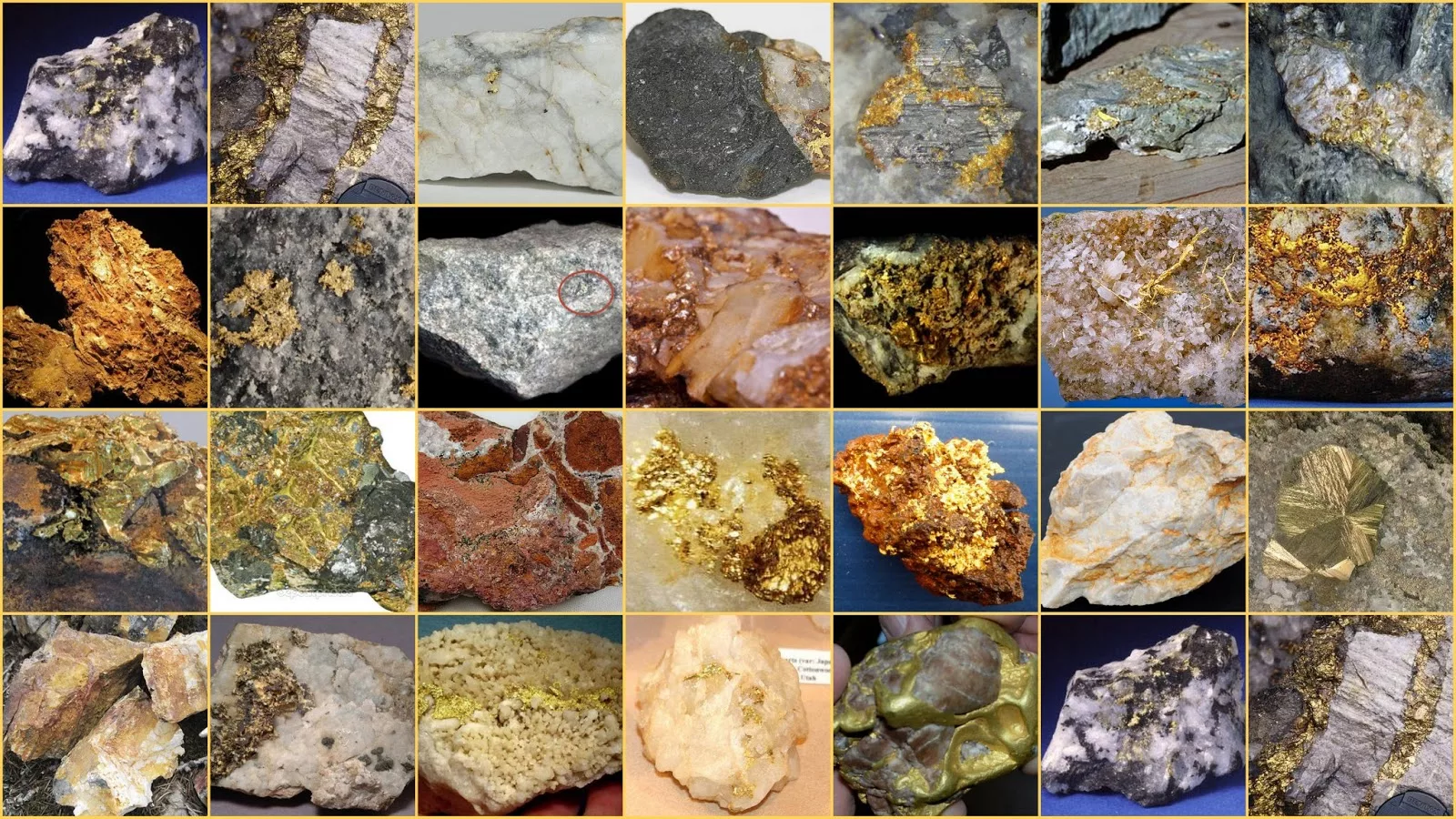Full List of Natural Mineral Resources in the United States
With a wide variety of minerals that are essential to driving the economy of the country, the United States is one of the richest countries in terms of natural resources. The nation has some of the largest resource reserves in the world, including coal, gold, petroleum, and copper. We shall examine the uses and significance of the many natural mineral resources that can be found in the United States in this article.

The U.S mineral resources, including coal, petroleum, natural gas, gold, silver, copper, lead, iron, uranium, nickel, zinc, mercury, molybdenum, phosphates, potash, tungsten, and bauxite. These resources play a crucial role in the production of goods consumed by people and can be found in the earth’s untapped reserves. All of the significant natural mineral resources found in the United States will be highlighted in this article.
LIST OF ALL NATURAL MINERAL RESOURCES FOUND IN THE UNITED STATES
The United States is rich in the following natural mineral resources.
COAL
The biggest reserves of coal are found in the states of Montana, Wyoming, Illinois, West Virginia, Kentucky, and Pennsylvania. Coal is one of the most significant minerals in the United States. These states are thought to hold more than three-fourths of the nation’s total coal reserves. More than 36% of the electricity in the world is produced by coal, making it an essential energy source. About 25% of the electricity produced in the US comes from coal-fired power plants. Since there is an abundance of coal in the nation, it has long been a dependable and affordable energy source.
PETROLEUM
The United States is the largest producer of crude oil in the world, with a substantial oil and gas sector. Despite the fact that demand has exceeded supply globally in the past year, the country still leads the way in oil production. In addition to the coastal waters, 32 states in the country also produce crude oil. This makes petroleum a crucial resource for the United States, providing the nation with energy and fuel for transportation, heating, and manufacturing.
NATURAL GAS
The fourth-largest proven gas reserves in the world, totaling 322 trillion cubic feet, are found in the United States, which is also abundant in natural gas. A flexible energy source, natural gas can be used for cooking, heating, and producing power. In 2016, natural gas accounted for the majority of the nation’s energy production. As environmental concerns rise, more people are turning to natural gas as an alternative to conventional energy sources like coal and oil.
GOLD
For thousands of years, people have valued gold as a precious metal because of its beauty and scarcity. With roughly 8,100 tons, the United States holds a sizable advantage in terms of gold reserves. Large open-pit heap leach mines in Nevada produce the majority of the nation’s gold. In addition to being a useful resource for the United States, net gold exports bring in a sizable amount of money for the nation.
SILVER
Silver is another precious metal that is abundant in the United States. In 2021, it was estimated that 1,000 metric tons of silver were produced in American mines. The leading silver-mining states in the country are Arizona, Montana, Nevada, and Idaho, with four silver mines and 33 additional mines that produce silver as a byproduct or coproduct. Silver is used in a variety of applications, including jewelry, electronics, and photography.
COPPER
A variety of industries, including building, electrical wiring, and plumbing, employ copper because it is a versatile metal. With more than 48 trillion tons of copper ore, the United States has numerous copper deposits in states including Arizona, Montana, Nevada, New Mexico, and Utah. Due to its importance as a source of raw materials for several goods and uses, copper is a valuable resource for the US.
LEAD
Lead is a heavy metal that is widely used in the production of batteries, ammunition, and radiation shielding. The United States is the third-largest lead resource extraction country in the world, with the majority of the ore mined in Alaska and the “lead-belt” in southeast Missouri. Lead is a crucial resource for the country, playing an important role in the production of essential goods.
LITHIUM
Lithium is a soft, silver-white metal that is used in the production of batteries for electronic devices, such as smartphones and laptops. It is also used in the production of electric vehicles and is an important component in energy storage systems. Lithium is found in many states, including Nevada and California, and the United States is the world’s third largest producer of lithium. With the growing demand for electric vehicles and renewable energy storage systems, lithium is poised to play an increasingly important role in the future of energy production.
IRON
The amount of iron ore produced in the United States is projected to be 46 million metric tons. The Lake Superior (Minnesota) deposits have been exploited for more than 90% of the iron ore produced in the US.
URANIUM
North America’s uranium industry is basically self-sufficient. Deposits in Wyoming and New Mexico were exploited by the United States. One mill (White Mesa, Utah) that produces uranium is supplied by four or five underground mines.
NICKEL
US nickel mines generated 18,000 metric tons of nickel in 2021, according to estimates. That was a reduction of over 9,000 metric tons from the output in 2015. The Eagle mine, an underground mine in Michigan, is the only nickel mine operating domestically in the United States at the moment.
ZINC
Around 780,000 tonnes (860,000 short tons) of zinc were produced from zinc mining in the US in 2019. It is now the fourth-largest producer of zinc in the world. Three smelting plants and 14 active mines are present in the nation.
MERCURY
The states of Alaska, Arkansas, California, Nevada, and Texas all have mercury toxicity. However, since 1992, mining of mercury as a major mineral product has ceased.
MOLYBDENUM
US production of molybdenum is second only to China’s in the world. 25% of the world’s molybdenum supply comes from this country. In 2014, molybdenum mining in the US yielded 65,500 metric tons of the metal, which was worth US$1.8 billion.
PHOSPHATES
The only substantial phosphorus deposits in the world are found in phosphate rock minerals. The world’s largest producer and consumer of phosphate rock is the United States of America. Phosphate fertilizers and other industrial goods are produced with this.
POTASH
The first commercial chemical patented in America was potash, which is still a crucial product today. Potash is produced in the U.S. from deposits in New Mexico and Utah. There is a significant potash reserve in the Michigan basin, notwithstanding the recent cessation of production there.
TUNGSTEN
Since the latter half of the 19th century, tungsten resources have been mined in the US. The following states have sizable tungsten deposits: Alaska, Arizona, California, Colorado, Idaho, Montana, North Carolina, New Mexico, Nevada, Texas, Utah, and Washington.
BAUXITE
The main source of aluminum in the world is bauxite ore. Alumina can only be made out of the ore after chemical processing (aluminum oxide). A negligible quantity of bauxite is produced in the United States of America.
RARE EARTH ELEMENTS
The industrial waste material referred to as “red mud” is indeed one of the viable options of rare-earth elements (REE) (bauxite residue). The Mountain Pass mine in California’s Mojave Desert is the sole U.S. rare earths mining and processing plant at the moment.
CONCLUSION
The United States’ endowment of mineral resources has played a defining role in shaping the nation’s economic landscape. From the early days of industrialization to the modern era of technological innovation, these resources have fueled growth, powered industries, and created jobs. As the world transitions towards a more sustainable future, the responsible management of these resources will be crucial for ensuring continued economic prosperity and environmental stewardship. The United States’ mineral wealth is not just a geological marvel; it is a testament to the nation’s economic resilience and its potential to shape the future.
